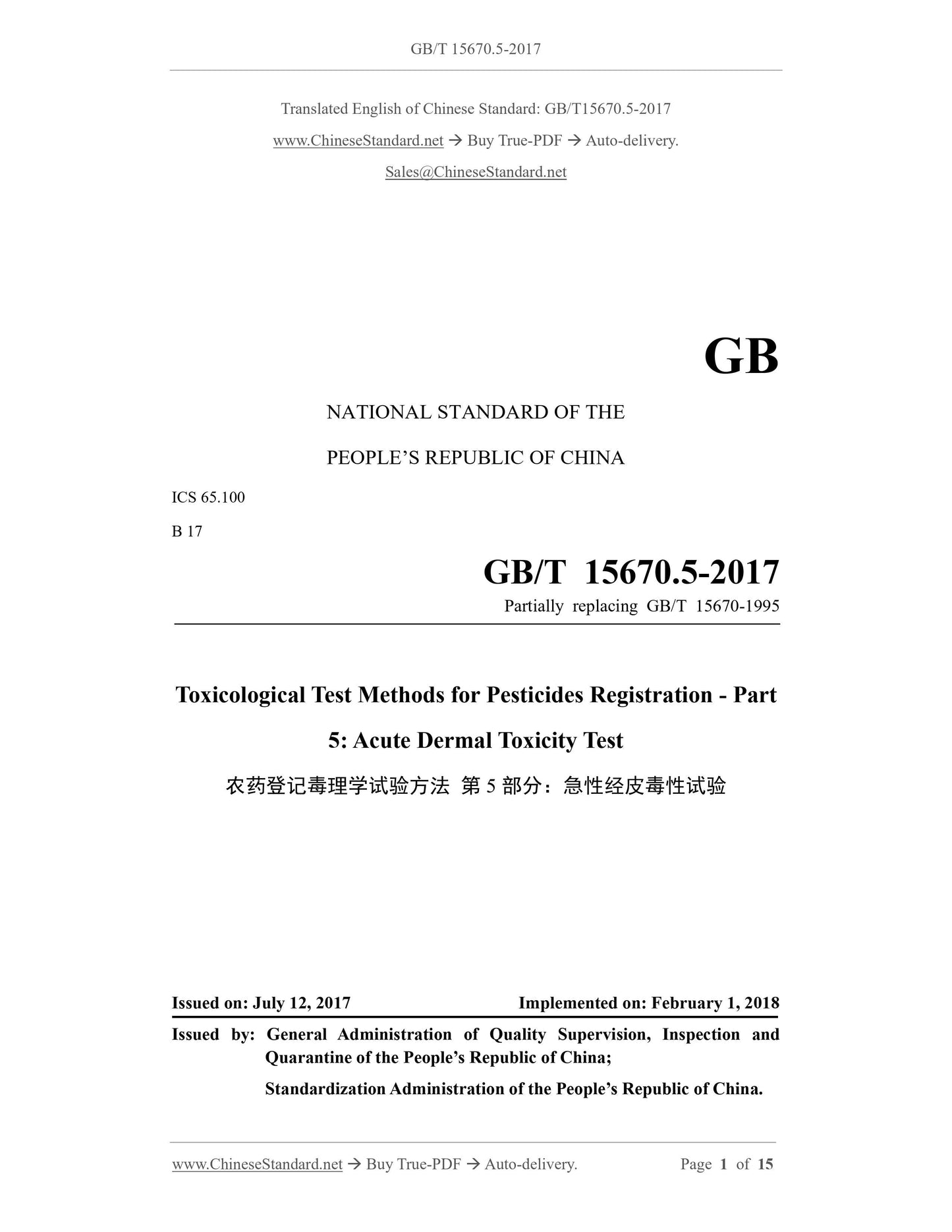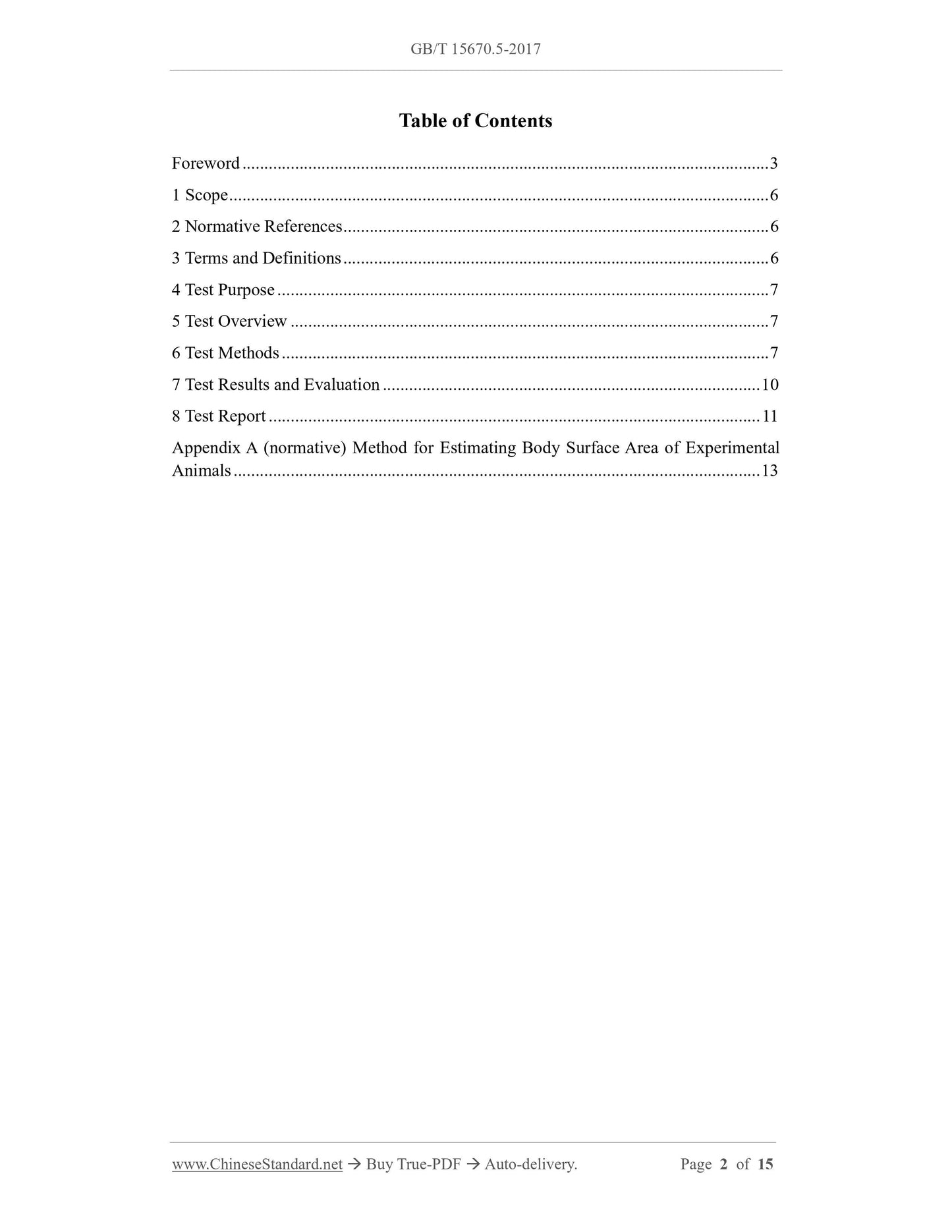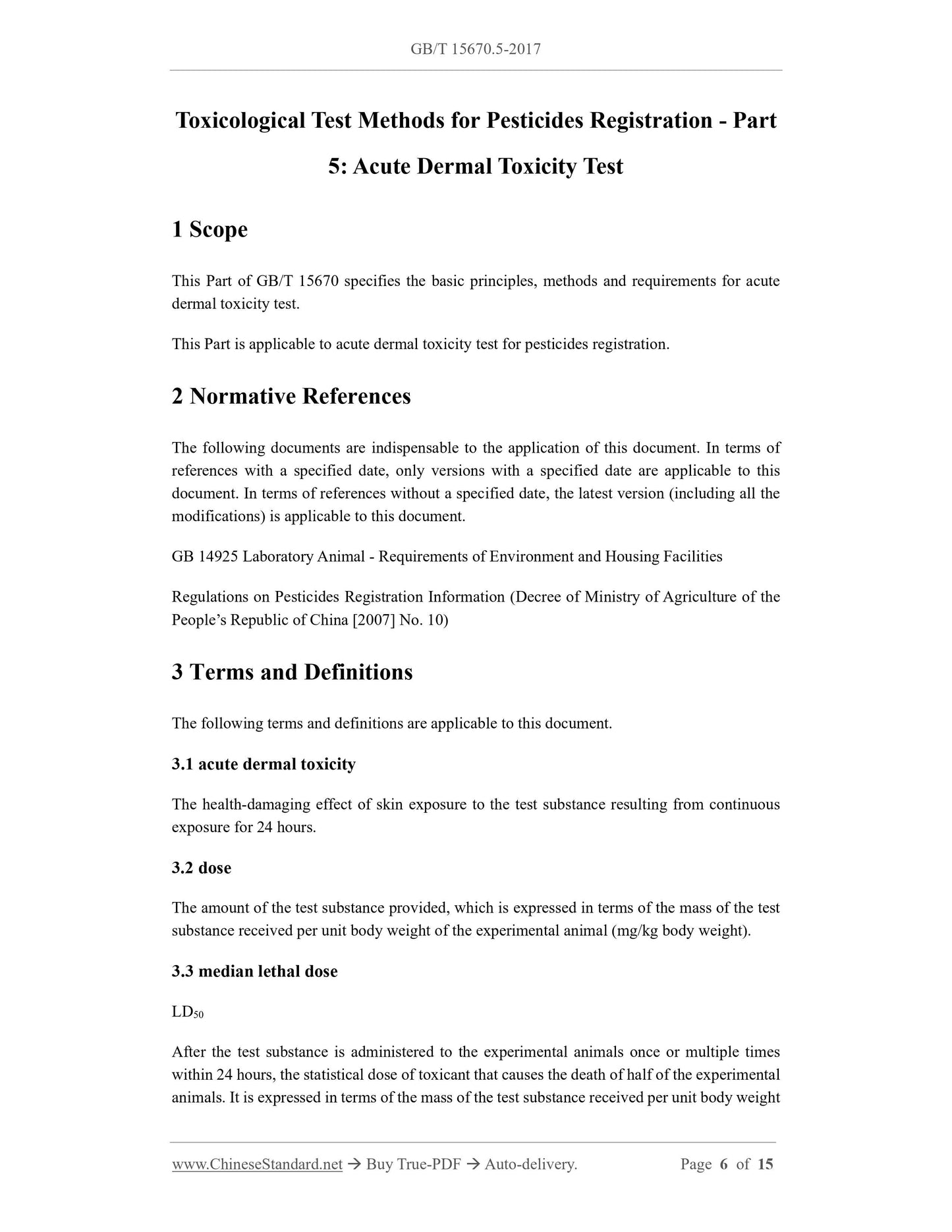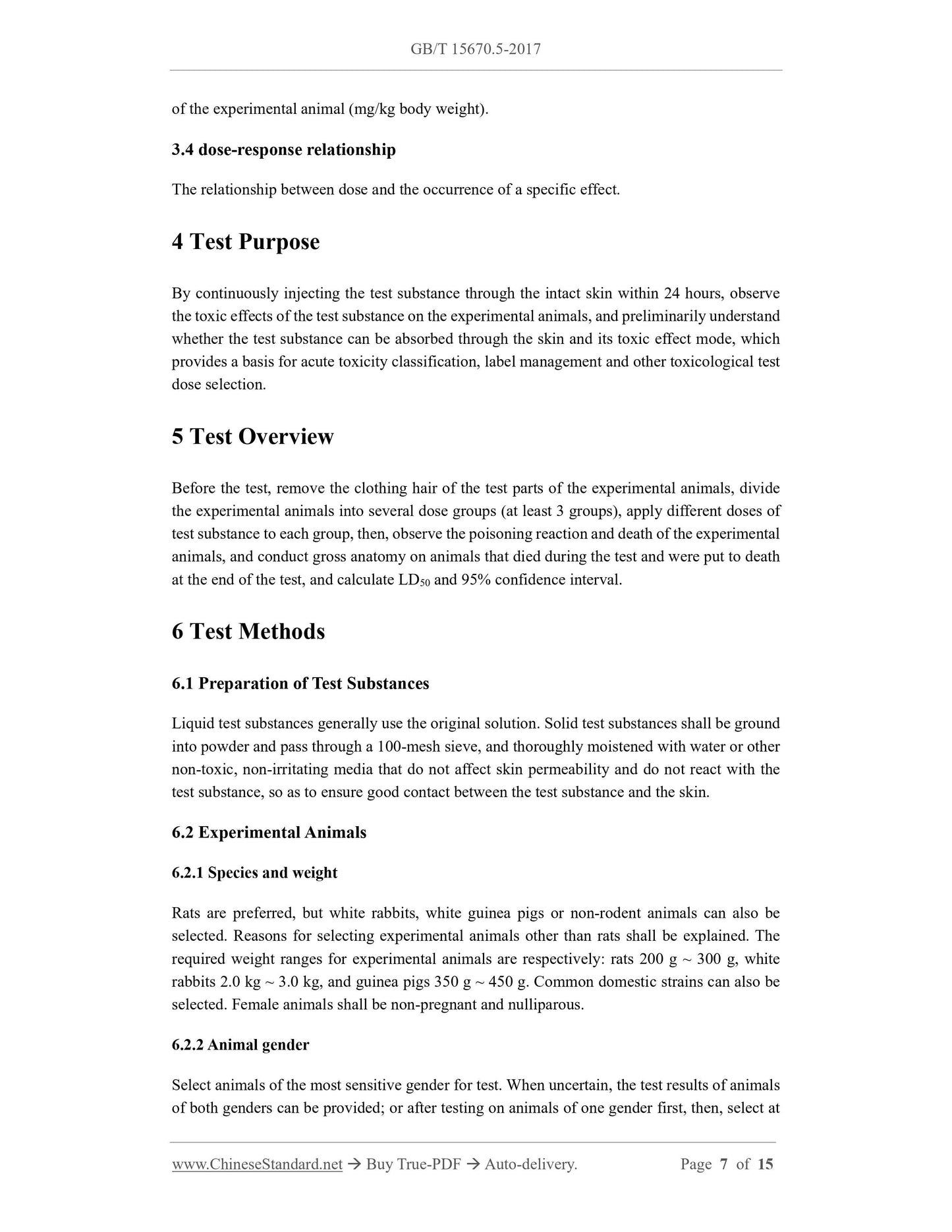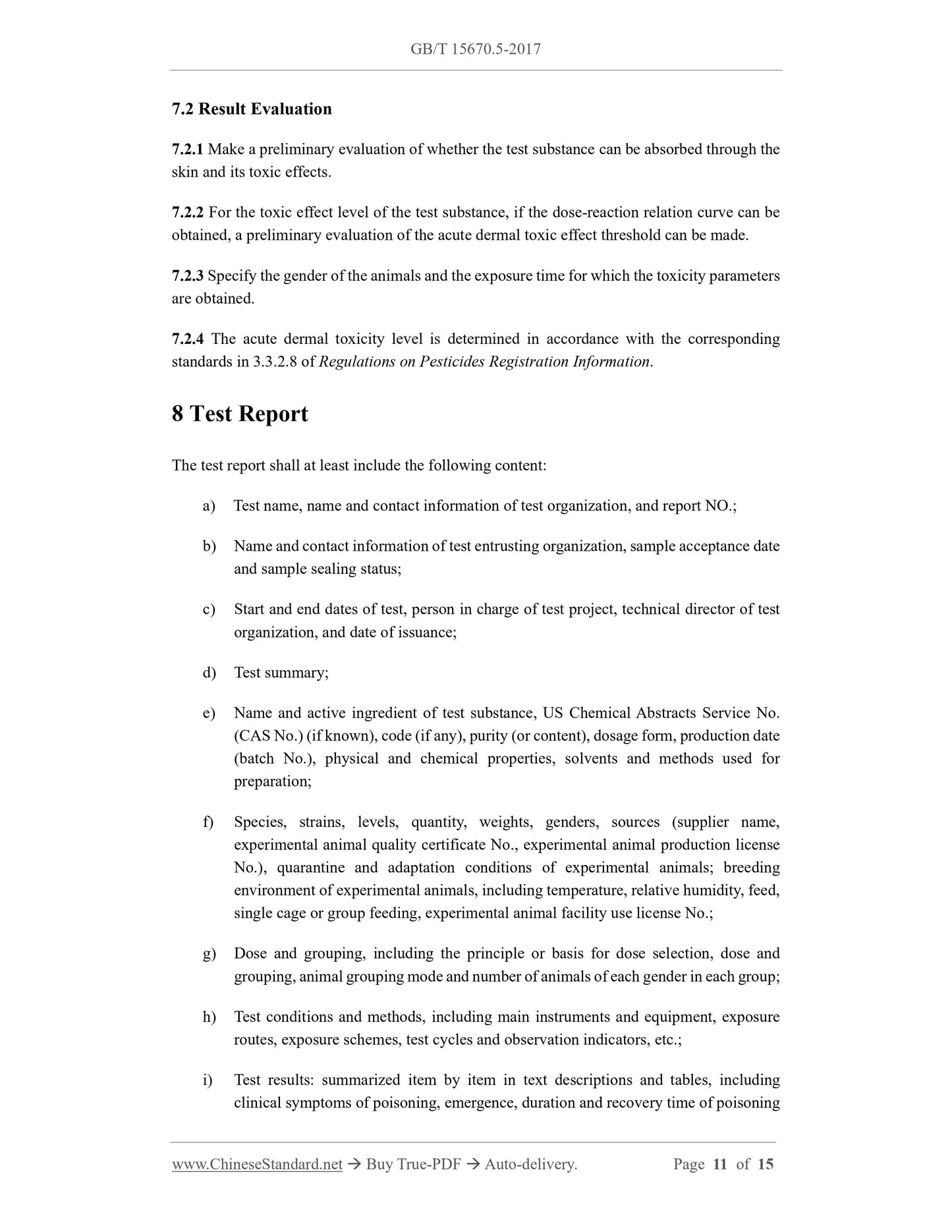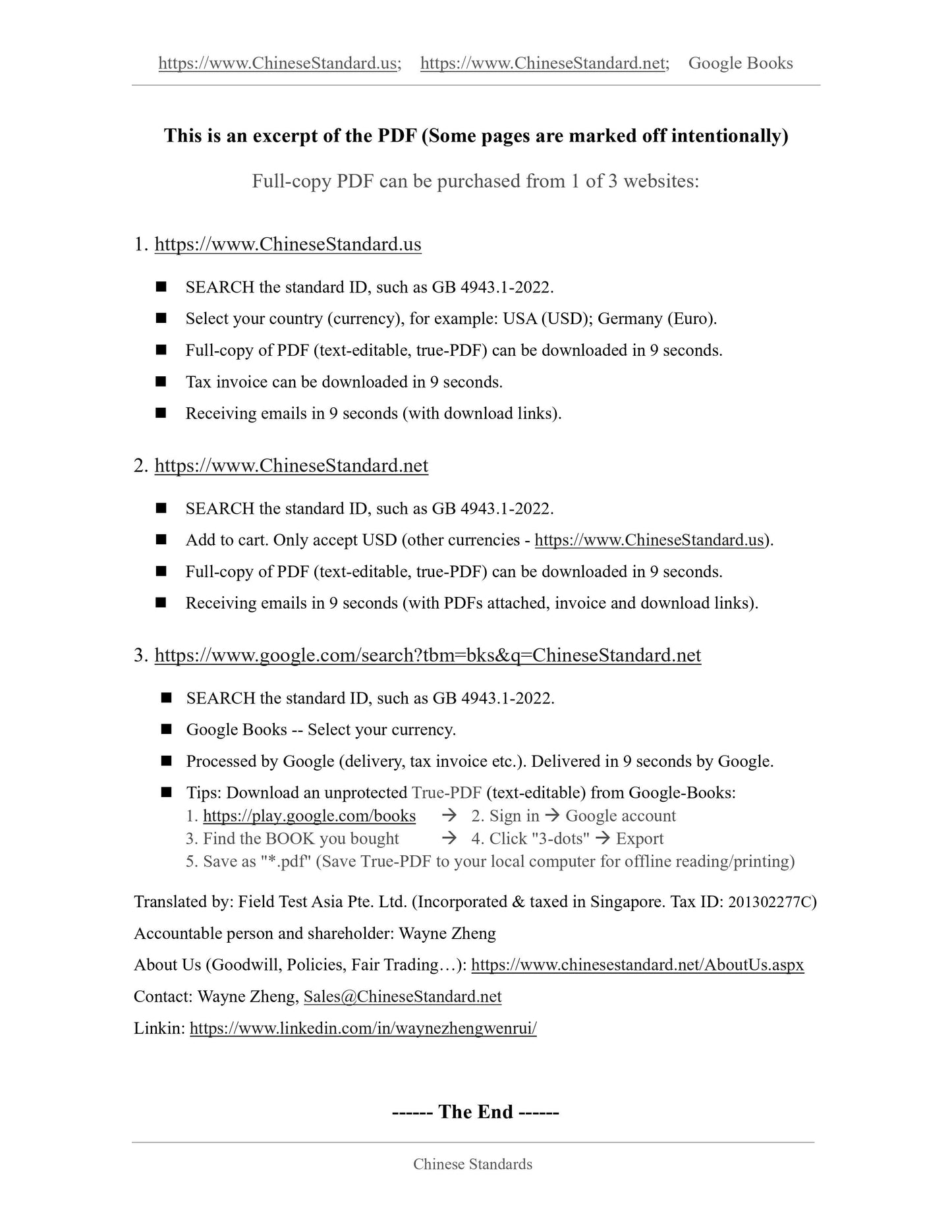1
/
of
7
www.ChineseStandard.us -- Field Test Asia Pte. Ltd.
GB/T 15670.5-2017 English PDF (GB/T15670.5-2017)
GB/T 15670.5-2017 English PDF (GB/T15670.5-2017)
Regular price
$165.00
Regular price
Sale price
$165.00
Unit price
/
per
Shipping calculated at checkout.
Couldn't load pickup availability
GB/T 15670.5-2017: Toxicological test methods for pesticides registration - Part 5: Acute dermal toxicity test
Delivery: 9 seconds. Download (and Email) true-PDF + Invoice.Get Quotation: Click GB/T 15670.5-2017 (Self-service in 1-minute)
Newer / historical versions: GB/T 15670.5-2017
Preview True-PDF
Scope
This Part of GB/T 15670 specifies the basic principles, methods and requirements for acutedermal toxicity test.
This Part is applicable to acute dermal toxicity test for pesticides registration.
Basic Data
| Standard ID | GB/T 15670.5-2017 (GB/T15670.5-2017) |
| Description (Translated English) | Toxicological test methods for pesticides registration - Part 5: Acute dermal toxicity test |
| Sector / Industry | National Standard (Recommended) |
| Classification of Chinese Standard | B17 |
| Classification of International Standard | 65.100 |
| Word Count Estimation | 10,116 |
| Date of Issue | 2017-07-12 |
| Date of Implementation | 2018-02-01 |
| Older Standard (superseded by this standard) | GB/T 15670-1995 Partly |
| Quoted Standard | GB 14925 |
| Issuing agency(ies) | General Administration of Quality Supervision, Inspection and Quarantine of the People's Republic of China, Standardization Administration of the People's Republic of China |
| Summary | This standard specifies the basic principles, methods and requirements for acute percutaneous toxicity tests. This standard applies to acute transdermal toxicity tests for pesticide registration. |
Share
